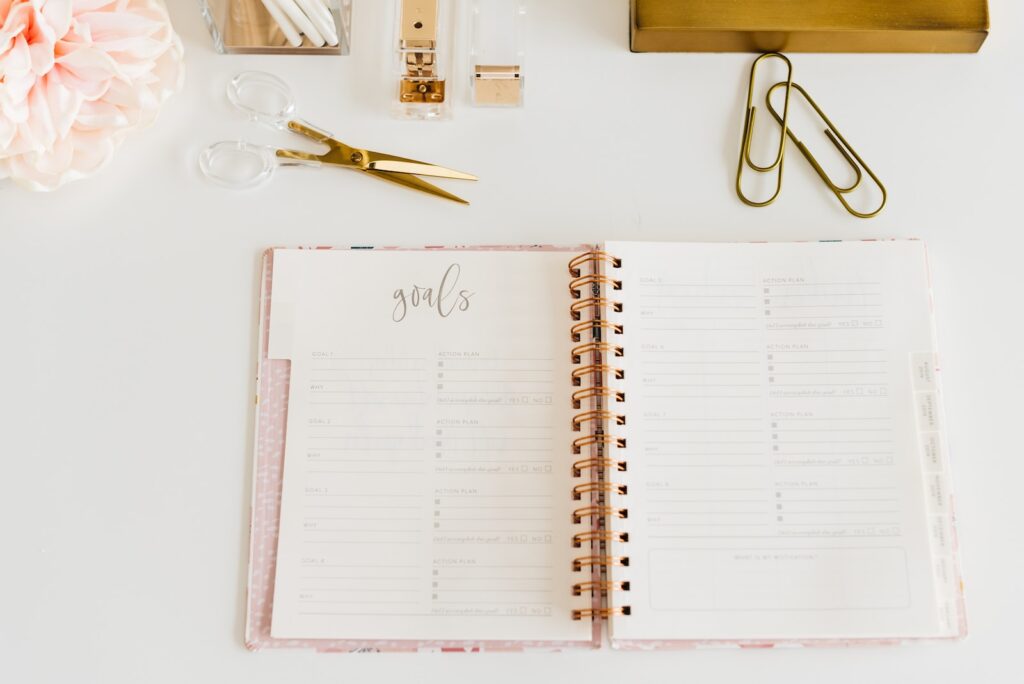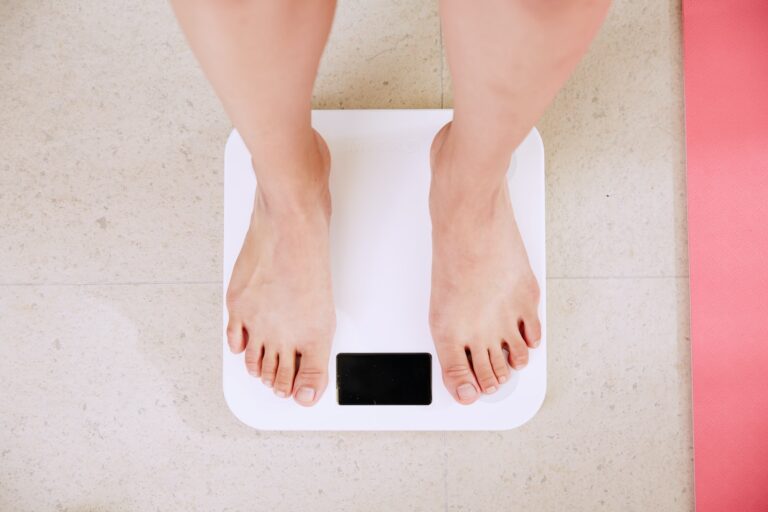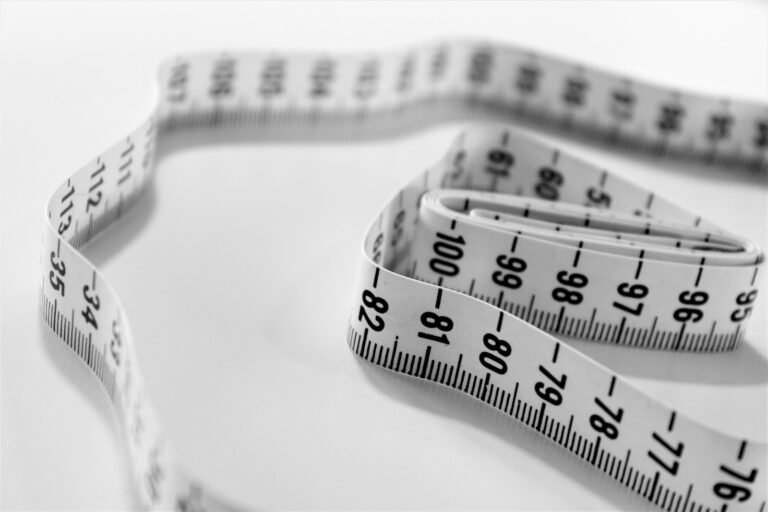Setting Realistic Weight Loss Goals for Long-Term Success
Are you tired of setting weight loss goals that are unattainable and unsustainable? You’re not alone. Many individuals mistakenly set ambitious targets without considering their lifestyle, metabolism, or other factors. The truth is that setting realistic weight loss objectives may help you succeed in the long run. In this blog post, we will provide you with practical advice on how to establish achievable weight loss goals for a healthier and happier life. So put away those fad diets and extreme workout routines–it’s time to set yourself up for lasting success!
The Importance of Weight Loss Goals

Many people set unrealistic weight loss goals that end up causing frustration and failure. Setting realistic weight loss goals is essential to success. Here are some tips for setting realistic weight loss goals:
- Make sure your goal is attainable – don’t set a goal that is too difficult to achieve. Trying to lose 50 pounds in six months, for example, is much harder than trying to lose 10 pounds a month. If you can’t realistically see yourself achieving your goal, it will be very hard to stick with it.
- Set a timeline for your goal – knowing when you want to achieve your goal will help motivate you. For example, if you want to lose weight and then get back into shape in six months, set a deadline of May 15th for yourself. This will help keep you accountable and ensure that you don’t put off taking action until the last minute.
- Break your goal down into smaller, more manageable chunks – it can be easier to stay on track when your goal is broken down into smaller tasks instead of one big challenge. Try planning out five small steps that will help you reach your goal over the course of the coming weeks or months rather than thinking about winning the race all at once.
- Reward yourself – giving yourself rewards every time you meet one of your smaller goals can encourage continued effort and keep you motivated throughout the entire process. Small things like removing one piece of candy from your shopping cart when you buy groceries, taking a 10 minute break after working out, or eating a dessert once a week can do wonders to boost your mood and make weight loss easier.
- Enlist help – if reaching your goal seems too daunting or impossible, consider enlisting the help of someone else. A support group or personal trainer may be just what you need to see results.
How to Set Weight Loss Goals
As a weight loss beginner, it can be tough to set realistic goals. However, doing so is key to your long-term success. Here are six tips for setting weight loss goals that will help you reach your goals:
- Define Your Why. The first step in setting any goal is to develop a strong reason for wanting to achieve it. What is driving you? Is it feeling confident and happy in your skin? Or do you want to feel better physically and mentally? Once you know what motivates you, setting weight loss goals becomes much easier.
- Know Your Priorities. In order to make the most of your time and effort, be sure to outline what’s important to you when it comes to weight loss. Are you only concerned with maintaining your current bodyweight? Or do you want to lose more overall body fat? Once you know what’s important, focus on reaching those targets while minimizing distractions or negative factors that could derail your plan.
- Set Realistic Goals Based on Your Current Level of Effort and Activity Level. It can be hard to maintain consistent change when starting out – especially if we’re used to eating whatever we want and not seeing the results until months or even years down the road! That said, don’t set overly ambitious or impossible goals; instead, set attainable goals that challenge you but still feel doable (aka “realistic”).
The ABCDE Method for Setting Weight Loss Goals
After reviewing the Scale of central obesity, which measures how much body fat is located around the middle, it’s important to set goals that are attainable but still challenging. To create realistic weight loss goals, start with the A (activity) portion of the scale and work your way down to D (diet).
A. Activity: According to the CDC, adults aged 20-64 should get at least 150 minutes – or about 37 minutes per day – of moderate aerobic activity, such as brisk walking or gardening. In addition, aim to do some form of resistance exercise 3 times per week.
B. Calories: It’s also important to make sure you’re Eating Enough Calories. The Institute of Medicine recommends that women consume 2,000-2,400 calories per day and men consume 2,500-3,000 calories daily.
C. Macronutrients: When it comes to eating carbohydrates and proteins, aim for a balance so that you aren’t too high in one nutrient or low in another. Examples of good sources of carbohydrate include fruits, vegetables, whole grains and healthy low-fat dairy products while protein can come from animal products like poultry, fish and beans. Leaner cuts of meat and skinless chicken breast are also good options sources of protein.
D. Dosage: Make sure you’re taking in the Right Amounts of Nutrients by following label directions for supplements and medications. Finally, be sure to drink plenty of fluids so that you’re staying hydrated.
Helpful Hints for Keeping Track of Your Progress
Weight loss is a long-term goal, so you need to set realistic weight loss goals. When you set a weight loss goal, make sure that it’s ones that you are capable of achieving. If your weight loss goal is to lose 20 pounds in six months, then start by cutting out 1000 calories a day from your diet. Don’t try to cut 3000 calories from your diet overnight – it will be too difficult and you won’t see the results you want.
Aim for small changes over time that will eventually lead to larger changes. Be Patient – One of the keys to successful weight loss is patience. You can’t expect to change everything about your diet and exercise habits all at once and expect to see drastic, immediate results. Make gradual changes and be consistent with them – this will help you stick with your goals and reach your target weight faster.
Keep track of Your Progress – It’s important to keep track of how well you’re doing on your Weight Loss Goals .Trackofweightlossprogress.com is a great resource for tracking your progress over time. It provides easy-to-use tools and resources so that you can track everything from how much weight you’ve lost to where you have made biggest improvements in your diet and exercise habits.
This way, you will be able to see which areas are working better for you and which areas need more attention
What to Do if You Hit a Roadblock
If you find that your weight loss goals no longer motivate you, it may be time to recalibrate your expectations. Here are five tips for setting realistic weight loss goals:
- Take stock of your current physical fitness level. If you’re at the beginning of your weight loss journey and aren’t yet fit, set a lower bar for yourself. Start by aiming to lose 5-10% of your current bodyweight rather than 25% or more right away.
- Don’t set unrealistic daily caloric goals. Rather than aiming to consume 1,500 calories every day, aim to intake 600-800 calories each day depending on your activity level and metabolism.
- Set time limits on weight loss progress. For example, if you want to lose 10 pounds in six months, don’t aim to shed 20 pounds in one week – allow yourself more time to reach your goal!
- Reward yourself for reaching milestones along the way. Whether you weigh yourself every week or once a month, treat yourself – especially if you make significant progress – with something special (like a new outfit or movie tickets). Celebrating small victories can help keep you motivated throughout the entire weight loss process!
- Be patient and consistent with your weight loss plan even when things get tough! Giving up is easy, but it will take much longer to regain the lost weight and achieve long-term success if you do so prematurely .
If you find that losing weight is no longer motivation for you, it’s important to recalibrate your weight loss expectations and revisit steps one-four listed above. With a realistic plan in place, you can reclaim your weight loss goals and reach your permanent body transformation dreams!
Conclusion
When it comes to weight loss, it is important to have realistic goals. If a goal feels too high or too daunting, our natural tendency is to give up before we even start. By setting small and achievable goals, you will be more likely to stay on track and see long-term success. In the following article, we outline some tips for setting healthy weight loss goals that are based on your current fitness level and size. Be sure to read through the list carefully and pick out one goal that you can realistically achieve over the next couple of months. Afterward, make a plan of action and track your progress regularly so that you know you are moving in the right direction.






2 Comments